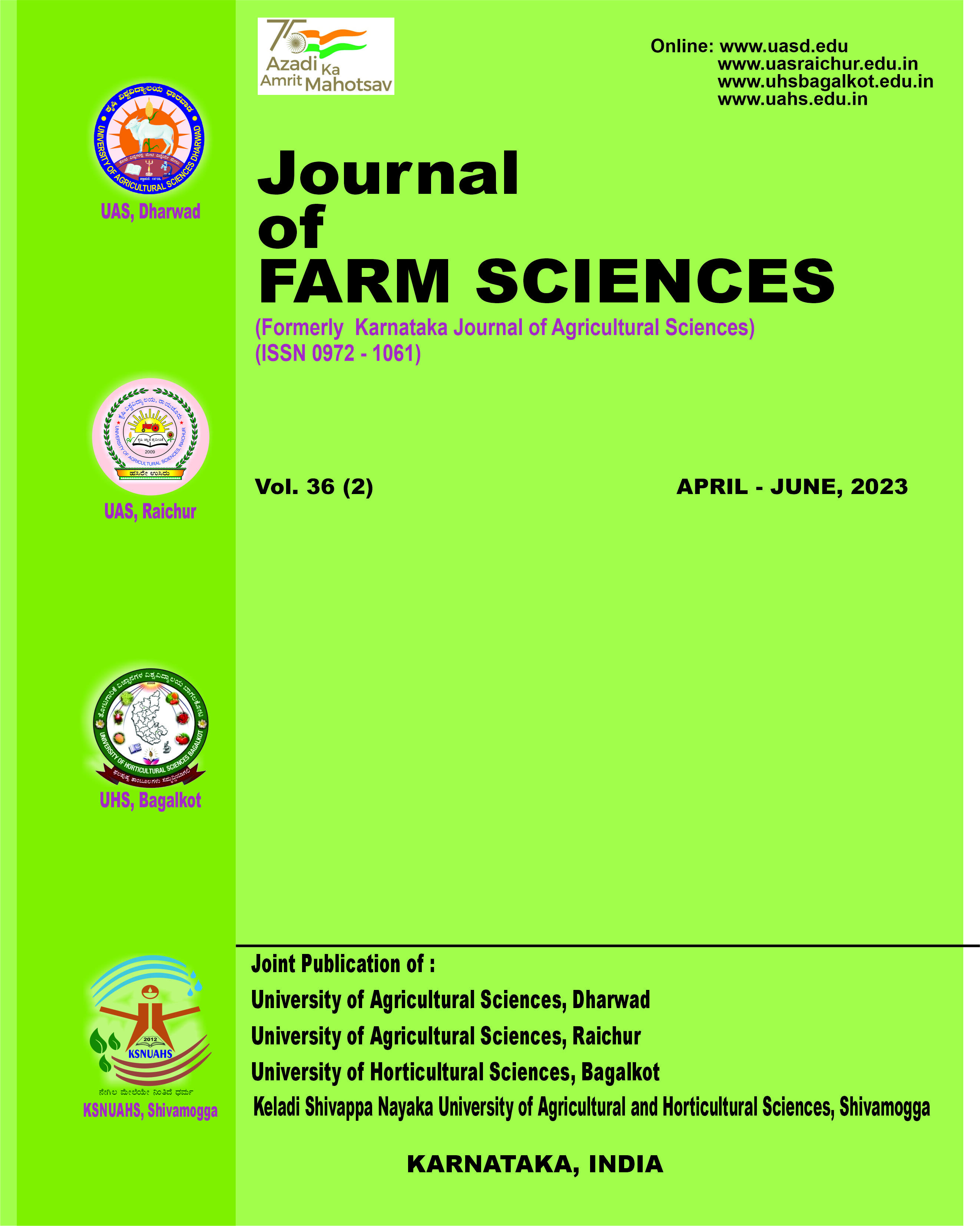Identification of promising transgressive segregants and trait association analysis in field pea (Pisum sativum L.)
Abstract
Field pea (Pisum sativum L. var. arvense, 2n=14) is amongst the most important legume crops of India, belonging to family Fabaceae. In changing climatic conditions, the crop suffers from various abiotic and biotic stresses. Developing high yielding early genotypes is essential both for avoiding terminal stage stresses and also to suit for late sown conditions. The progenies derived from crossing contrasting parental lines with respect to flowering time and maturity, were evaluated for various morpho-phenological and productivity traits. The superior transgressive segregants for flowering and maturity of different classes were isolated. Among 315 progenies evaluated, 44 were early flowering and early maturity while 13 were late flowering with early maturity. Out of these, 21 segregants were better than best parent for productivity. Understanding the trait association not only helps to establish relationship among the traits but also to formulate selection indices. Trait associations among morpho-phenological and productivity traits through correlation coefficient analysis was carried out for 315 F3 progeny families. Seed yield per plant had positive significant correlation with number of pods per plant (0.82), hundred seed weight (0.44), number of seeds per pod (0.39), pod length (0.37), plant height (0.28), number of primary branches per plant (0.19) and number of pods per axil (0.15) while negative non-significant correlation with days to fifty per cent flowering (-0.10) and positive non-significant correlation with days to maturity (0.04). The phenological trait, days to maturity exhibited positive significant correlation with days to fifty per cent flowering (0.55), plant height (0.48), number of primary branches per plant (0.28), number of pods per axil (0.15), number of pods per plant (0.12) and pod length (0.12). The study revealed significant positive association of seed yield per plant with yield component traits, number of pods per plant, hundred seed weight and number of seeds per pod implying the importance of these traits while formulating selection criteria/index. The population is intended to isolate the transgressive segregants showing early maturity without significant compromise for yield and several such promising progeny families with varying maturity coupled with high productivity have been identified.


